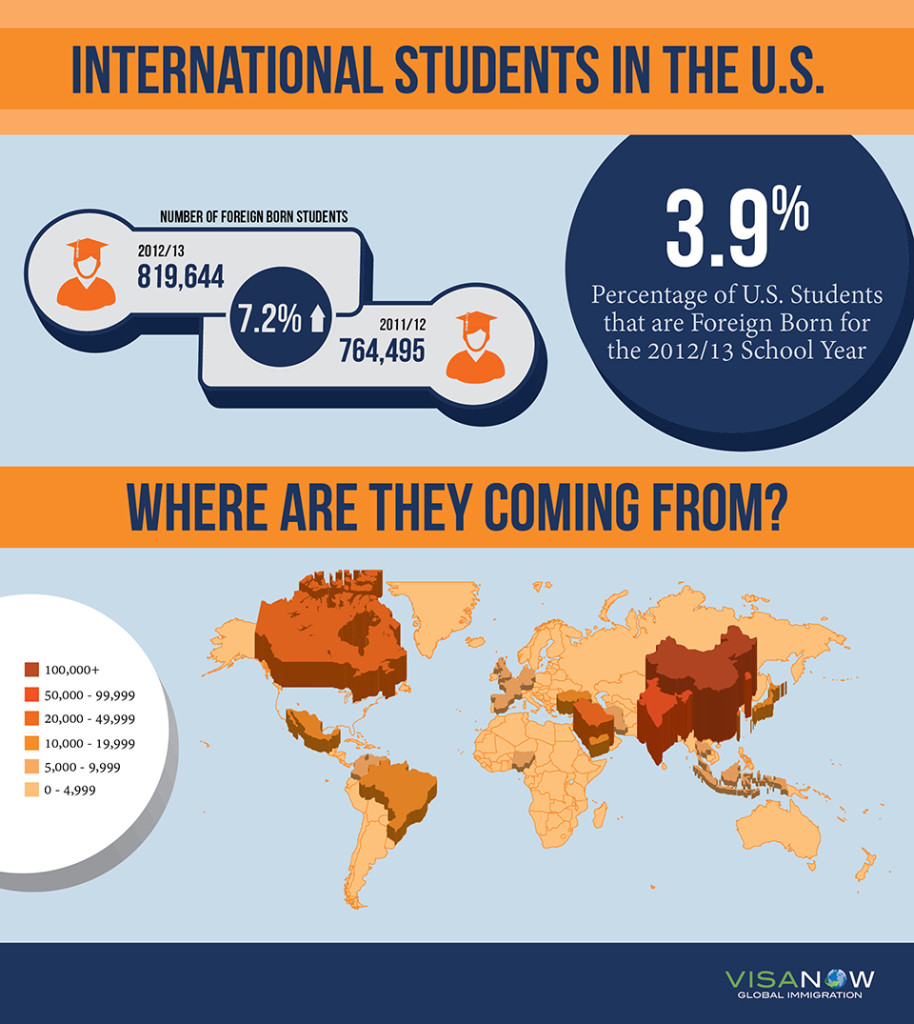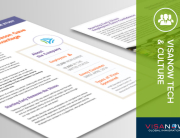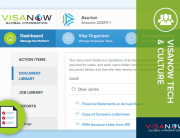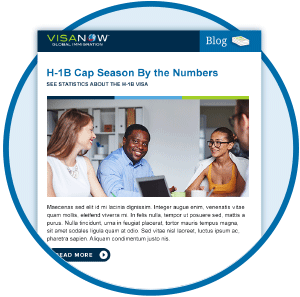The United States is experiencing a record number of international students enrolling in its educational institutions, During the 2012 – 2013 school year, there were over 800,000 foreign nationals studying in American universities alone. And every single one of them had to go through the U.S. immigration process in order to get a student visa – in most cases, they apply for an F-1 visa, the most common type of U.S. student visa.
More F visas are issued than any other type of U.S. student visa. If you are a foreign citizen seeking a U.S. degree in an academic setting, you are almost certainly going to need an F-1 visa, even if you hail from a country in the Visa Waiver Program or if you are already here on a different type of non-immigrant visa, such as a B visa.
Your course of study and the type of school you plan to attend determine whether you need an F visa or a different type of visa. Vocational programs, short term cultural exchanges, and non-academic programs are more likely to require a J-1 or M-1 visa than an F-1 visa. The student visa process is a little more complex than most other non-immigrant visas, so it’s important to seek the advice of a knowledgeable immigration attorney if you are not sure which one you qualify for.
Applying for the F-1 Student Visa
Prospective students of a U.S. university, college, high school, private elementary school, seminary, conservatory, or language program generally need to apply for an F-1 student visa. Before you can apply at a U.S. embassy or consulate for an F-1 student visa, you must already be accepted by a SEVP (Student and Exchange Visitor Program) approved school. Once you are accepted as an incoming student, you will be enrolled in SEVIS (Student and Exchange Visitor Information System) for a fee. After this step, the U.S. school will provide you with a Form I-20, which you will present at your consular interview for the F visa.
Upon first issuance of your F-1 student visa, you cannot enter the U.S. more than 30 days before your educational program’s start date. Students with F visas can renew their visa as long as they maintain their student status (enrolled full-time.) Continuing students can enter the U.S. at any time before their classes start.
A few important rules about F-1 student visas:
- F-1 visa holders must be able to pay the full cost of education for their program; they do not qualify for government subsidies or in-state tuition.
- F-1 visa holders cannot attend public elementary schools or publicly funded adult education classes.
- F-1 student visa holders must be enrolled full-time in their educational program to keep their status valid.
- If the F-1 visa holder is a high school student, he or she is only allowed to study in the U.S. for 12 months.
- The ability to work with an F-1 visa is extremely limited and can depend on where and what the job is for.
Who applies for F-2 and F-3 student visas?
Spouses and minor children of F-1 student visa holders need to apply for the F-2 visa. F-3 visas, also known as the border commuter student visas account for less than 1% of all F visas. F-3 visas are only available to citizens in the border areas of Canada and Mexico who wish to commute to a U.S. school for either full- or part-time study.
Working in the U.S. with an F-1 visa
F-1 students can work on their school campus for 20 hours a week or less. They cannot work off campus in their first year of study, but after that first year some can apply for Curricular Practical Training (CPT) or Optional Practical Training (OPT). F-2 visa holders cannot work at all, and F-3 visa holders are only eligible for Curricular Practical Training (CPT) after graduation and are not eligible for on-campus work.
Each week, we look at a different non-immigrant visa by letter, starting with “A” visas. Our intention is to not only help people understand the depth and complexity of U.S. immigration, but also to bring awareness to the enormously diverse pool of immigrants that enter our country every year.








